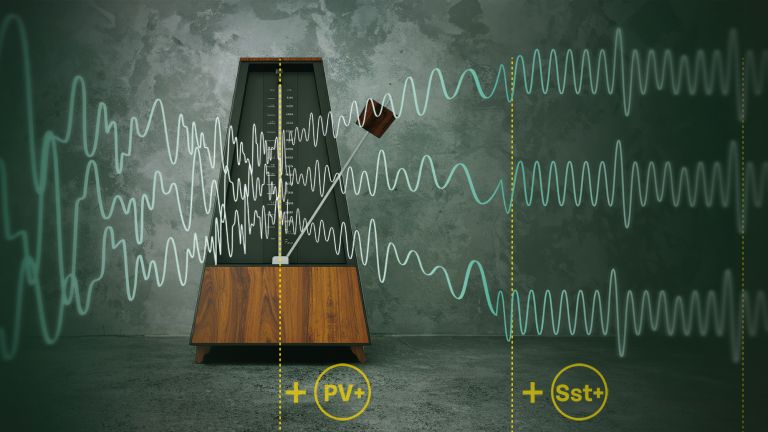Interaction between interneurons stabilizes gamma oscillations in a brain

In the context of neural communication, gamma oscillations influence how stimuli are synchronized, transmitted, and encoded within brain structures. These brain waves are generated by the aggregated activity of nerve cells and move in the highest frequency band recorded by EEG measurements, at 30 Hz and above. Their activity can be detected particularly during heightened cognitive processes in the hippocampus and cortex, brain regions that are particularly relevant for memory and where, for example, states of attention are controlled.
Published: 26.05.2025
It is known that the generation of gamma oscillations depends on an interaction between excitation and inhibition of excitatory and inhibitory neurons. However, the role of specific interneurons in this process was previously unclear. Researchers at the Ernst Strüngmann Institute, led by Prof. Martin Vinck, have now investigated how two types of brain cells, specifically parvalbumin (PV+) and somatostatin (Sst+) interneurons, interact in the generation of visually induced gamma oscillations. The researchers found that PV+ cells act as the “conductors” of this gamma oscillatory rhythm, firing early and with great precision to keep the network synchronized. Sst+ cells, on the other hand, become active later and provide finer adjustments that help stabilize the oscillations. The researchers therefore suggest that PV+ and Sst+ interneurons could control the excitability of somatic and dendritic nerve compartments with precise time delays coordinated by gamma oscillations. Taking the morphology of excitatory neurons into consideration thus suggests an extended gamma model that goes beyond the classic PING model. Based on these results, the researchers were able to develop a new computer model that uses computations to provide fundamental insights into how inhibitory neurons regulate stability and oscillations in each cortical circuit.
These findings may offer relevant starting points for a deeper understanding of the genesis of Alzheimer’s dementia or forms of schizophrenia. The rhythm of gamma oscillations already serves as a marker for diseases associated with dysfunctional interactions between neural excitation and inhibition, so that diagnostics could be further improved in the future with the help of these findings. At the same time, understanding the specific chronological functions of PV+ and Sst+ interneurons could guide therapeutic strategies aimed at restoring unstable gamma oscillation patterns through neuromodulation or pharmacological control of these interneuron subtypes.
Original publication
Onorato I, Tzanou A, Schneider M, Uran C, Broggini AC, Vinck M (2025). Distinct roles of PV and Sst interneurons in visually induced gamma oscillations. Cell Reports, Volume 44, Issue 3, 25 March 2025, 115385 https://doi.org/10.1016/j.celrep.2025.115385